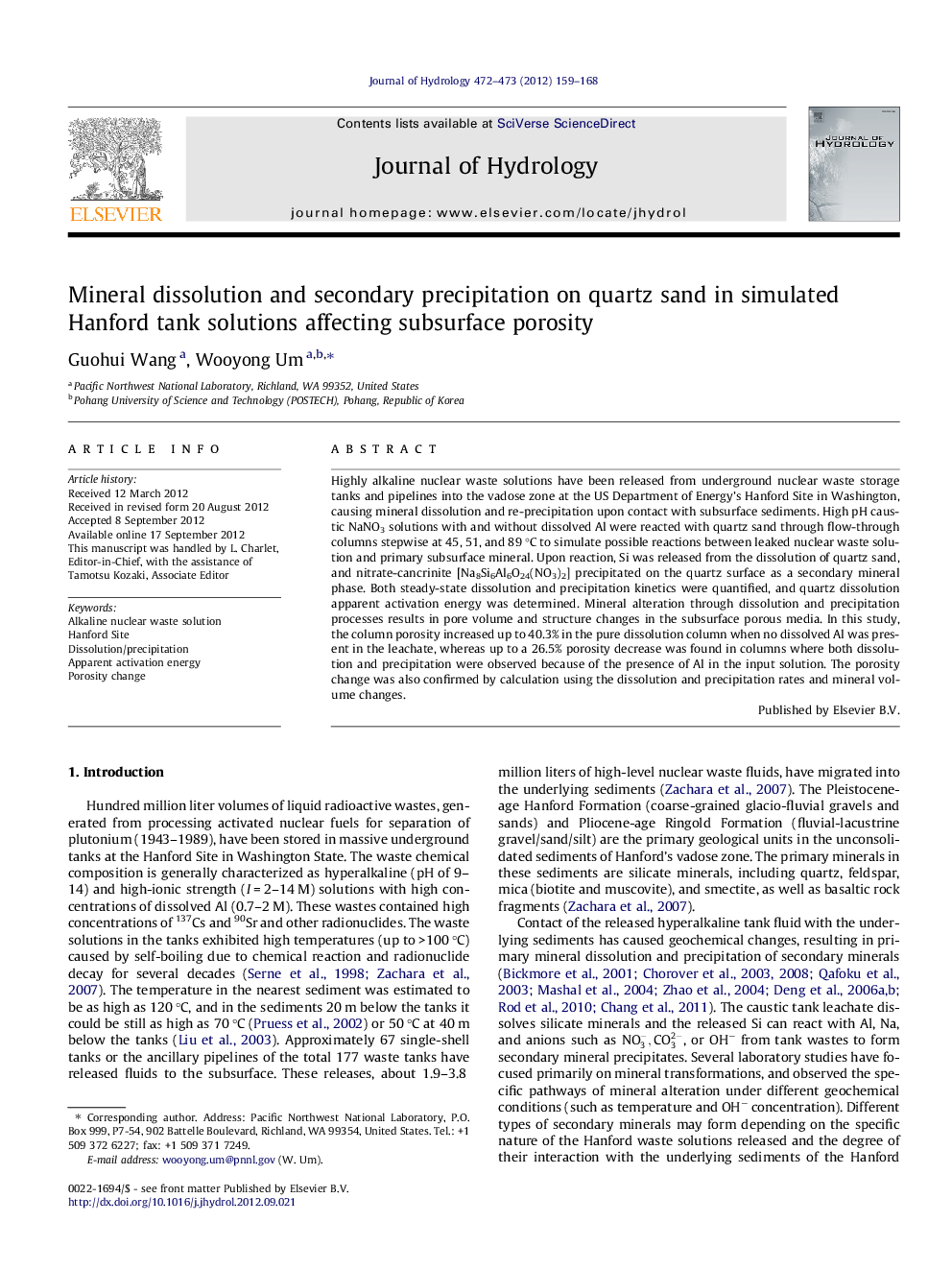| Article ID | Journal | Published Year | Pages | File Type |
|---|---|---|---|---|
| 4576507 | Journal of Hydrology | 2012 | 10 Pages |
Highly alkaline nuclear waste solutions have been released from underground nuclear waste storage tanks and pipelines into the vadose zone at the US Department of Energy’s Hanford Site in Washington, causing mineral dissolution and re-precipitation upon contact with subsurface sediments. High pH caustic NaNO3 solutions with and without dissolved Al were reacted with quartz sand through flow-through columns stepwise at 45, 51, and 89 °C to simulate possible reactions between leaked nuclear waste solution and primary subsurface mineral. Upon reaction, Si was released from the dissolution of quartz sand, and nitrate-cancrinite [Na8Si6Al6O24(NO3)2] precipitated on the quartz surface as a secondary mineral phase. Both steady-state dissolution and precipitation kinetics were quantified, and quartz dissolution apparent activation energy was determined. Mineral alteration through dissolution and precipitation processes results in pore volume and structure changes in the subsurface porous media. In this study, the column porosity increased up to 40.3% in the pure dissolution column when no dissolved Al was present in the leachate, whereas up to a 26.5% porosity decrease was found in columns where both dissolution and precipitation were observed because of the presence of Al in the input solution. The porosity change was also confirmed by calculation using the dissolution and precipitation rates and mineral volume changes.
► Primary mineral (quartz) dissolution and nitrate-cancrinite precipitation. ► Dissolution/precipitation rates depend on temperature and Al concentration. ► The subsurface mineral alternation results in pore structure and porosity change. ► Enhanced immobilization of Sr with the neo-formed secondary minerals.
